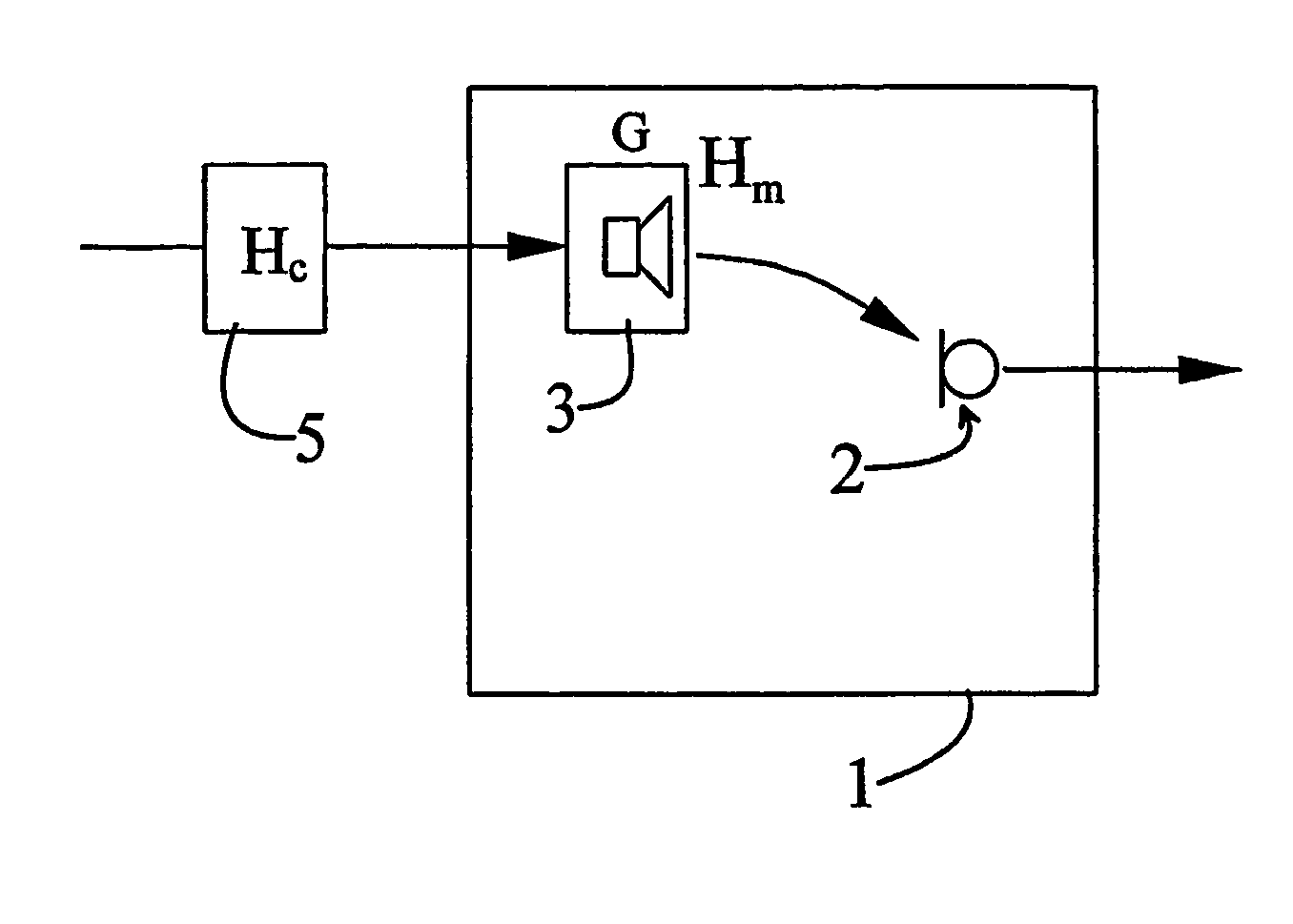Method for designing a modal equalizer for a low frequency audible range especially for closely positioned modes
a modal equalizer and low frequency technology, applied in the direction of frequency response correction, transmission, electrical equipment, etc., can solve the problems of complex temporal behavior, difficult or impossible to find analytical or numerical models that are useful in practice, and the decomposition of eigenmodes assuming a linear and time-invariant (lti) system,
- Summary
- Abstract
- Description
- Claims
- Application Information
AI Technical Summary
Benefits of technology
Problems solved by technology
Method used
Image
Examples
Embodiment Construction
4 Frequency-zooming ARMA (FZ-ARMA)
[0055]The problems in resolving very closely positioned modes and mode groups was the reason in this study to experiment with methods that have better control over frequency resolution. Several ideas are available for improvement, including frequency warping [22] and frequency selective modeling such as selective linear prediction [15], multiband AR / ARMA techniques [16], and many other high-resolution signal modeling methods.
[0056]Frequency warping is a convenient technique when either lowest or highest frequencies require enhanced frequency resolution. This approach can be extended to Kautz filters that exhibit interesting properties of generalized frequency resolution control [23].
[0057]Frequency selective modeling has been applied for example in linear prediction of speech. In a simple case a target response can be low-pass filtered and decimated in order to model the low-frequency part of the response. A range of higher frequencies can be modula...
PUM
 Login to View More
Login to View More Abstract
Description
Claims
Application Information
 Login to View More
Login to View More - R&D
- Intellectual Property
- Life Sciences
- Materials
- Tech Scout
- Unparalleled Data Quality
- Higher Quality Content
- 60% Fewer Hallucinations
Browse by: Latest US Patents, China's latest patents, Technical Efficacy Thesaurus, Application Domain, Technology Topic, Popular Technical Reports.
© 2025 PatSnap. All rights reserved.Legal|Privacy policy|Modern Slavery Act Transparency Statement|Sitemap|About US| Contact US: help@patsnap.com



